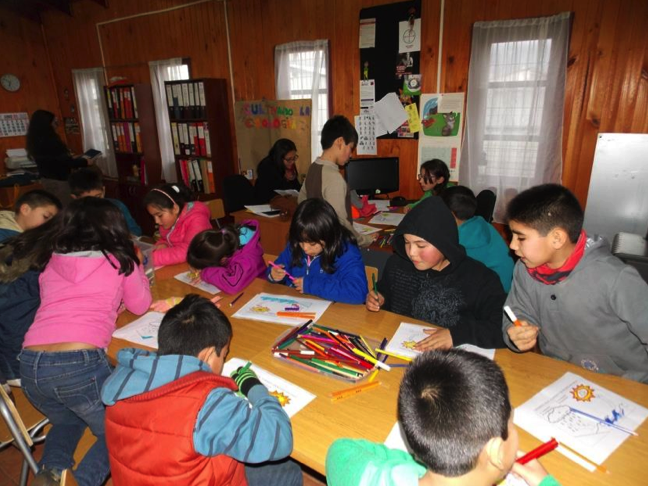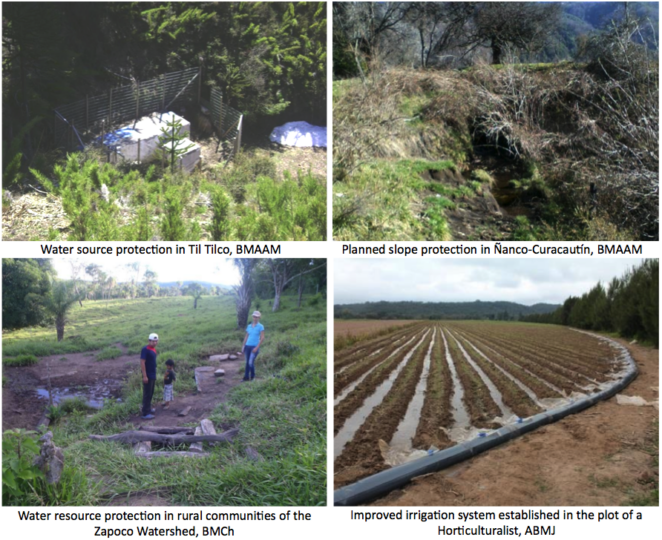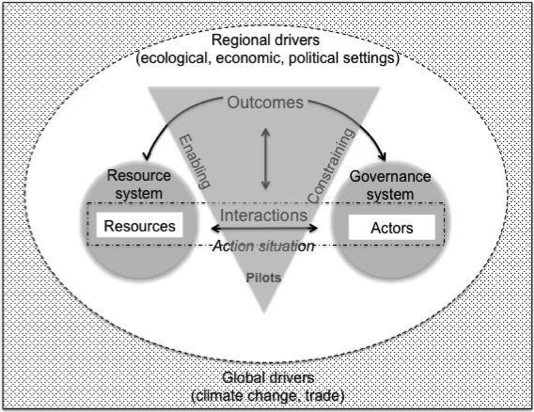EcoAdapt Project: Cross-site Analysis of Ecosystem Based Adaptation in South America

Introduction
In this EcoAdapt report (download available in the right-hand colum of this page) we focus on the analysis of adaptation implementation processes associated with pilot actions in three EcoAdapt study sites: Argentina, Bolivia and Chile. Adopting a socio-ecological perspective (building on Ostrom, 2009) we show how the design and implementation of Ecosystem-based Adaptation and Community-based Adaptation pilot actions respond to and build on local communities’ knowledge and leadership to tailor solutions to local contexts while ensuring project ownership. We also highlight barriers and success factors that might provide general insights for similar processes in other landscapes.
This article focuses on the lessons learnt from the cross-site analysis that are highly relevant to other adaptation projects. Details of the pilot interventions planned for and undertaken in each site can be found in Table 1 on page 11 of the report and on the weADAPT pages for each site: Argentina (Asociación Bosque Modelo Jujuy, ABMJ), Bolivia (Chiquitano Model Forest, BMCh) and Chile (Bosque Modelo Araucarias de Alto Malleco, BMAAM). The pilot actions implemented within the EcoADAPT project include: capture of rainfall, slope protection, building expanding awareness and advocacy capacity, protection of water sources (in Chile; BMAAM), domestic health, expansion of protected areas (in Bolivia; BMCh) and irrigation efficiency (in Argentina; ABMJ).

Methods
Our protocol is built on the conceptual framework of socio-ecological systems developed by the Economy Nobel Prize Laureate Elinor Ostrom (2009). This framework recognizes a systemic perspective on the socio-ecological system, thus accounting for interactions among actors, natural resources and existing formal and informal rules and norms to use and access natural resources. It recognizes four sub-systems (Figure 1): resources (e.g. protected areas, water systems, agricultural fields); units of resources (e.g. trees, units of water, wild animals); governance systems (government and other organizations that manage resources systems, standards and rules and how they are created ); and users (individuals or groups of people who use the resources for other purposes ).
We first characterize actions and briefly describe their contexts (which are more deeply presented in Deliverables 2.4 and 2.5). Then we illustrate the strengths and success factors that helped in the identification and implementation of these adaptation actions referring to communities’ resources. We identify then the barriers and obstacles to feed a conclusive discussion that can serve similar processes in other sites. An overview of this process is provided in Figure 1 below.

Key Messages
- Adopting a clear leadership role in promoting adaptation to climate change in water resources has opened up new funding opportunities for EcoAdapt’s CSOs partners, as well as expanded their network of allies to achieve their corporate objective.
- To achieve local impact engaging communities and local stakeholders from the beginning is a key strategy for successful collaborative and joint efforts that address local problems, local empowerment and project ownership as well as to ensure the project sustainability in the longer term.
- Ensuring the engagement of local formal and informal authorities is also strategic as it can facilitate ownership in the design and implementation of adaptation actions.
- Communication and dissemination should always be seen as adaptation implementation actions as they allow for empowerment and open opportunities for scaling up and out of these actions.
- At this stage, it is essential to ensure the identification and application of additional funding sources to expand the scope of adaptation actions and thus implementation of the larger adaptation strategic plans in the sites.
- In Chile, Argentina and Bolivia there is physical evidence of adaptation actions that can serve as demonstrative actions to scale out and up, as is already occurring in most sites. The use of communication and dissemination strategies through local media and events has also served to this objective as the efforts of communities and stakeholders are informing other actors.
Barriers
A number of barriers were recognised in the cross-site analysis and can be summarised as follows:
- The political and institutional governance settings heavily affected the scope of actions. In Bolivia and Chile the social-political situation is favourable to the implementation of pilot project actions. However, in Argentina it was only possible to start implementation of one concrete action (i.e. irrigation efficiency) with a limited coverage (33 smallholder producers) compared with the original potential scope of action, which included four strands of actions and several allies in the implementation process. This limited the scope of the ABMJ’s reach and actions in the field.
- That the ABMJ in Argentina are not recognised as an an entity has lead to a lot of uncertainty and social tensions with the national government, resulting in difficulties in implementing project actions.
- Stakeholder fatigue during the diagnostic phase induced some level of drop-off of key stakeholders.
- The physical landscapes, especially in Chile and Bolivia, are large and presented a logistical challenge. Visits to some communities required investing significant logistic arrangements, making it difficult to maintain momentum and provide more continuous technical assistance and follow up/back up. The communities with proactive leaders that maintained closer relation with the Municipality had an easier path to implementation, as the Municipality was able to commit more resources for implementation.
- Cultural idiosyncrasy and differences in working languages. The passive attitude of some communities in Bolivia represented a barrier to their engagement. In all sites differences in languages posed barriers to build a common understanding of terms between technical staff, researchers, communities and policy makers. In some cases this left participants feeling little ownership and understanding of the key messages. In this regard, the numerous workshops undertaken under the EcoAdapt project have helped in creating a common view or shared perception of issues.
-Controversies
- In Chile and Bolivia most rural communities engaged in implementation are indigenous communities. During the identification of actions, controversies emerged between the indigenous cosmovision on water resources and the progressive paradigm of the private sector (e.g. mining and livestock in Bolivia and Chile). This was evident not only at the community level but also at the national level in the legal frameworks.
- Different perspectives on adaptation actions in the face of water scarcity. While private actors (especially the most resources-endowed) feel they have the experience and capacity to cope with scarcity (i.e. have a de-facto clear preference for autonomous adaptation) and are reluctant to join collective efforts, the public and civil society actors are more oriented towards collective planning and implementation efforts. This can be a clear barrier in implementing some actions.
- Different expectations that diverse group of participants have regarding the design and implementation process. Researchers aimed at generating new knowledge while serving the collective interest of local stakeholders felt a tension between scientific rigor vs practical knowledge. Local communities expected these processes to result in concrete solutions, mainly to address their daily problems, and were less interested in acquiring knowledge, methods and tools. The advantage of having worked with legitimate local leadership (of local CSOs) has helped EcoAdapt level off these controversies and steer a successful implementation process.
-Trade-offs
- Actions with potential benefits in the longer term have normally received little preference by the communities unless benefits were perceived also in the medium or shorter term.
- Most pilot actions required several meetings to motivate and get stakeholders involved in implementation, and for developing agreements for formalizing their engagement. Time devoted to these activities has always been in tension with the pressing needs for actions that communities and stakeholders have to cope with in their daily problems and also because of a certain level of fatigue in participation processes.
-Uncertainaties
- How the social system can maintain these actions and/or even expand them (outscaling or upscaling) is a concern as the authorities and institutions available provide unstable back up. For instance, in all sites Municipalities have played a central role in supporting the diagnosis and implementation of most actions. However, electoral years have showed how social processes in adaptation planning and implementation are dependent on local administrative and political interests that frame what is possible and what is not in a given time. Such elections may require projects to “start from zero” in order to convince and train new authorities and their technical staff.
- The corruption and bad management of funds is an ongoing issue.
Success factors, innovations, networks and outcomes
- Stakeholders’ engagement from the very start of the project diagnostic phase has been among the most important success factors across all sites.
- EcoAdapt’s approach embracing a co-construction of knowledge to inform diagnosis of problems and identification of solutions has helped maintain engagement and the project ownership among stakeholders. Specifically, the creation of a common space for dialogue and exchange of knowledge in which existing interests, motivations, knowledge and perceptions on problems are shared, has made possible an on-going engagement of multiple stakeholders, and has helped build trust, commitment and project ownership along the way.
- Working through previously recognized key agents of change (e.g. in Argentina the extension office INTA, in Bolivia the Municipality and the Communities’ leaders, in Chile the Municipality of Curacautin, or local education centers), and building on the existing trust among our EcoAdapt’s CSOs partners with local communities and stakeholders (which was built on previous collaborations), enabled us to navigate through contrasting interests, motivations and working languages of different stakeholders (private, public, civil society).
- Expansion of interest generated through the implementation of energizing actions. Neighboring producers or early adopters might get interested through organized peer-to-peer learning events/activities. In this respect, a domino effect was common in all sites where communities, through the exchange of experiences among them, were part of a social collective learning process that engaged new communities/stakeholders to adopt similar solutions.
- The capacity to build new alliances represents a key success factor as the scope of action can be expanded to other communities through the exchange of experiences or through engagement of higher officials and/or organizations working at other scales that can be regarded as disseminators of innovations promoting adoption at higher scales.
- The methodologies and approaches used enabled good communication practices, and project ownership of tools, for exmaple:
- the use of visual methods in workshops;
- the use of participatory techniques that eased the access to information by participants;
- participants’ provision of feedback on content and results
- Expanding the implementation support network and the engagement of the local formal authority in all sites was also key, though it was complicated by political elections in all sites at some stage of the project.
View more EcoAdapt project outputs:
EcoAdapt project – Working paper on social dynamics during adaptation planning
EcoAdapt project: Lessons Learned from the Analysis of Socio-Ecological Dynamics
EcoAdapt project: Socio-institutional context analysis
EcoAdapt project – Working paper on social dynamics during adaptation planning
iModeler manual: a quick guide for fuzzy cognitive modelling
Cronología de los cambios en el paisaje de la región de la Araucanía desde 1850 hasta 2013
(0) Comments
There is no content